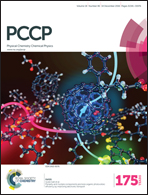Dark states enhance the photocell power via phononic dissipation
Abstract
The high efficiency of the photon-to-charge conversion process found in photosynthetic complexes has inspired researchers to explore a new route for designing artificial photovoltaic materials. Quantum coherence can provide a mean to surpass the Shockley–Quiesser device concept limit by reducing the radiative recombination. Taking inspiration from these new discoveries, we consider a linearly-aligned system as a light-harvesting antennae composed of two-level optical emitters coupled with each other by dipole–dipole interactions. Our simulations show that the certain dark states can enhance the power with the aid of intra-band phononic dissipation. Due to cooperative effects, the output power will be improved when incorporating more emitters in the linear system.



 Please wait while we load your content...
Please wait while we load your content...